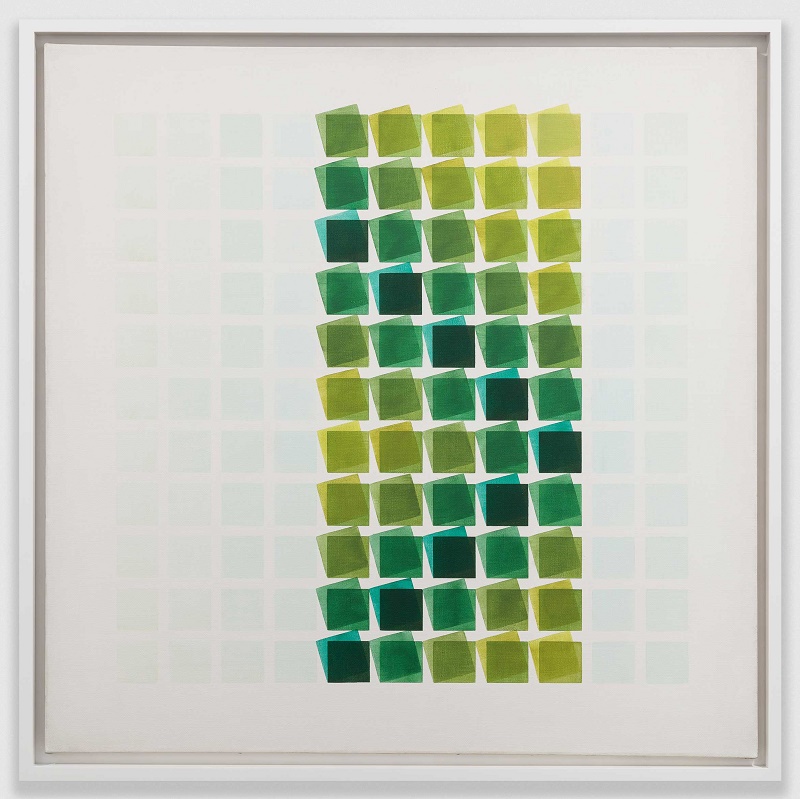The only realist painting is, for me, the one that searches to affirm its material reality before anything else…
– Manuel Espinosa
Argentinian artist Manuel Espinosa helped found the Concrete Art movement in Argentina in the 1940s and 1950s, turning away from his previous surrealist works in favor of a geometric language better aligned with the industrial world. Espinosa’s systems of geometric shapes layer semi-opaque circles and squares within a gridded composition, achieving depth and optical movement through the interplay of overlapping colors. In Ahilas, he superimposes tilted squares over a nearly identical grid in analogous greens, teals, and yellows, which sit off-centered in a barely perceptible field of squares. The motion and luminosity in this work reflects the influence of European Op Art on the artist after his visits to the continent in the late 1960s. Espinosa’s paintings have been included in numerous exhibitions in Argentina, and can be found in the collections of Museo de Arte Moderno, Buenos Aires; Blanton Museum of Art, Austin; Museum of Fine Arts, Houston; and the Patricia Phelps de Cisneros Collection, New York.
© colección espinosa
